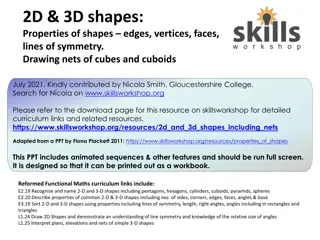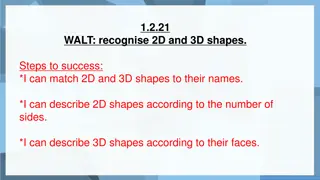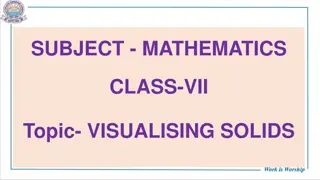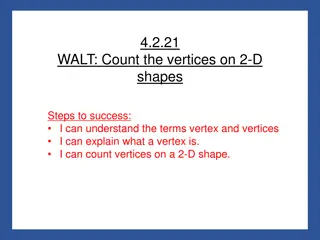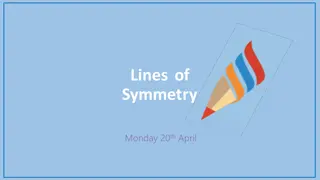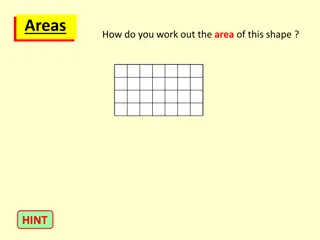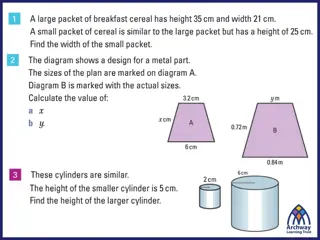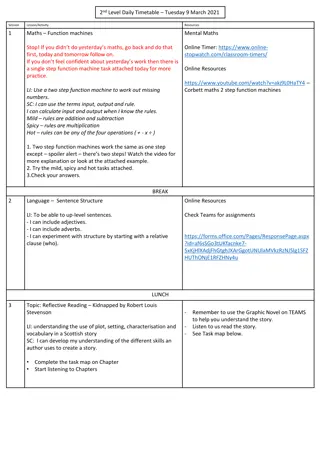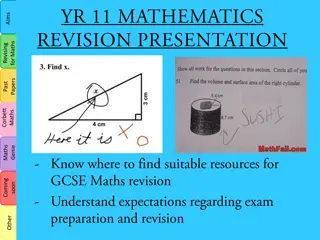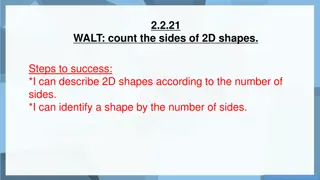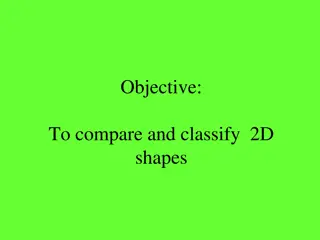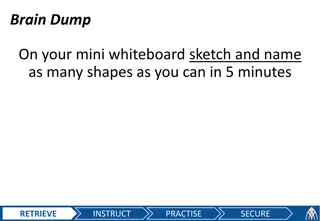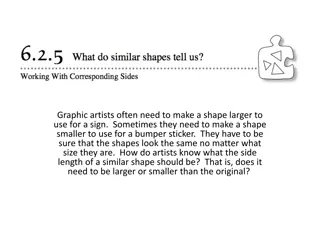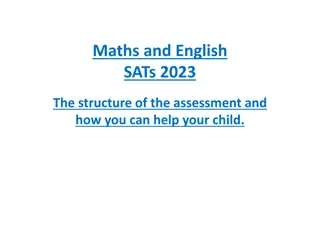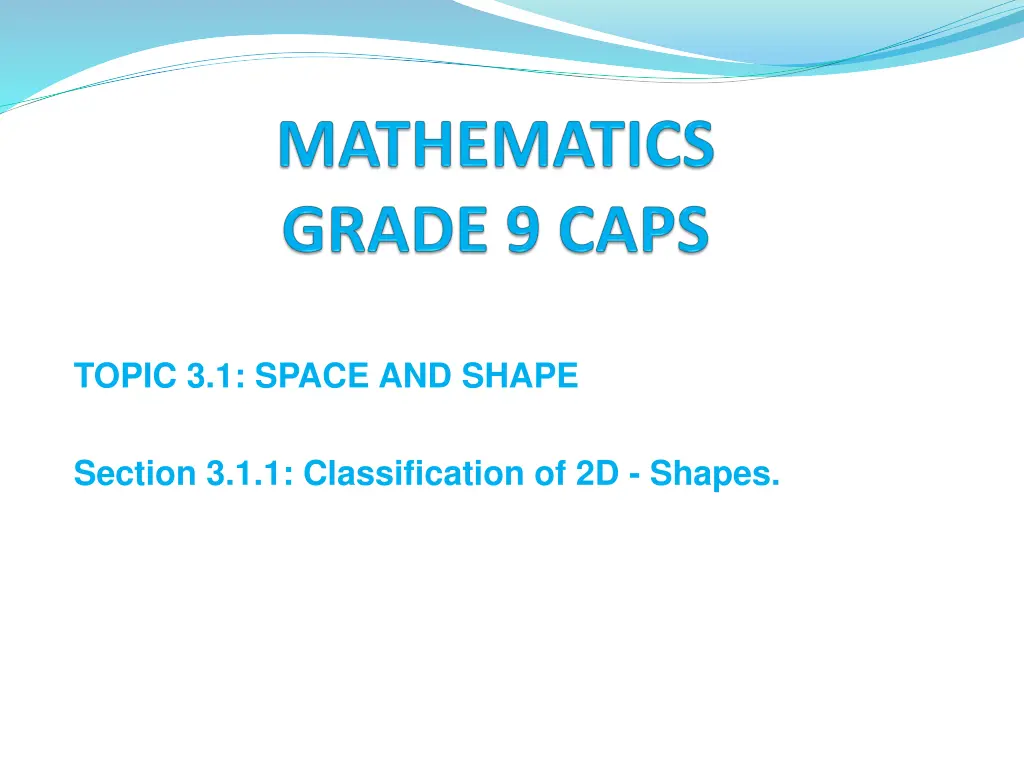
Understanding Properties and Classification of Quadrilaterals
Explore the classification and properties of quadrilaterals, including parallelograms, rectangles, squares, rhombuses, trapeziums, and kites. Learn about their unique characteristics, such as side lengths, angles, and diagonals, essential for solving geometric problems involving these shapes.
Download Presentation

Please find below an Image/Link to download the presentation.
The content on the website is provided AS IS for your information and personal use only. It may not be sold, licensed, or shared on other websites without obtaining consent from the author. If you encounter any issues during the download, it is possible that the publisher has removed the file from their server.
You are allowed to download the files provided on this website for personal or commercial use, subject to the condition that they are used lawfully. All files are the property of their respective owners.
The content on the website is provided AS IS for your information and personal use only. It may not be sold, licensed, or shared on other websites without obtaining consent from the author.
E N D
Presentation Transcript
TOPIC 3.1: SPACE AND SHAPE Section 3.1.1: Classification of 2D - Shapes.
Topic 3.1:Geometry of 2D-Shapes The following sections will be covered: 3.1.1 Classification of 2D-Shapes 3.1.1a Triangles 3.1.1b Quadrilaterals 3.1.2 Similar and Congruent Triangles 3.1.2a Similar Triangles 3.1.2b Congruent Triangles 2
Classifying 2D-Shapes In section 3.1.1b, learners will be able to: Revise and write clear definitions of quadrilaterals in terms of their sides, angles and diagonals, distinguishing between: -parallelogram, rectangle, square, rhombus, trapezium and kite. Solve geometric problems with quadrilaterals.
Properties and classification of Quadrilaterals A quadrilateral is any plane shape with four sides. The main six types of quadrilaterals are: Parallelogram Rectangle Square Rhombus Trapezium Kite
Properties and classification of Quadrilaterals The classification of quadrilaterals should include the recognition that : rectangles and rhombi are special kinds of parallelograms a square is a special kind of rectangle and rhombus. Properties of quadrilaterals learners should know: 1. The sum of the interior angles of quadrilaterals is 360 . a + b + c + d = 360 . b c a d
Properties and classification of Quadrilaterals Properties of quadrilaterals learners must know: -the opposite sides of a parallelogram are parallel and equal. -the opposite angles of a parallelogram are equal. 2 > y Parallelogram x y x >
Properties and classification of Quadrilaterals Properties of quadrilaterals learners must know: 3. -all sides of a rhombus are equal. -the opposite sides of a rhombus are parallel. -the opposite angles of a rhombus are equal. -diagonals of a rhombus bisect each other at right-angles. Rhombus
Properties and classification of Quadrilaterals Properties of quadrilaterals learners must know: 4. - opposite sides of a rectangle are equal and parallel. - the size of each interior angle of a rectangle is 90 . -diagonals of a rectangle bisect each other. Rectangle > >
Properties and classification of Quadrilaterals Properties of quadrilaterals learners must know: 5. - all sides of a square are equal. - opposite sides of a square are equal and parallel. - the size of each interior angle of a square is 90 . - diagonals of a square bisect each other at right-angles. Square
Properties and classification of Quadrilaterals Properties of quadrilaterals learners must know: 6. A trapezium has at least one pair of opposite sides parallel. The three types of trapezium are illustrated below: A B C Scalene Trapezium Isosceles Trapezium Right Trapezium
Properties and classification of Quadrilaterals Properties of quadrilaterals learners must know: 7. - a kite has two pairs of adjacent sides equal. - diagonals of a kite are perpendicular to each other. Kite
Solving Geometric Problems Involving Quadrilaterals. Example 1: Use the diagram below to answer the following questions. q p x 73 1. What is the name of the quadrilateral above? Explain your answer. 2. What are the properties of this quadrilateral that can help you to find the sizes of the interior angles? 3. Find the sizes of angles p, q and x.
Solutions: E xample 1 1. The quad is a parallelogram because the opposite sides are parallel. 2. The properties are: the sum of the interior angles of quadrilaterals is 360 . the opposite angles of a parallelogram are parallel and equal. 3. i) Q = 73 (opposite sides of a parallelogram are equal). ii) p = x = (360 -73 -73 ) 2 = 107 (sum of interior angles of a quad is = 360 ).
Example 2 a) Draw a rough sketch of quad JKLM, with L = 35 and K = M = 122 . b) What is the size of L? c) Name the quadrilateral JKLM. d) Name any sides in JKLM that are equal. e) Will JL equal KM in length? Explain your answer.
Solutions: Example 2 a) Sketch: J 35 M 122 122 L K
Solutions: Example 2 L = 360 - (35 +122 +122 ) = 81 JKLM is a Kite. JK=JM and KL=ML. No. The diagonals of a kite are not equal. b). c). d). e).
Activity 1 Quadrilateral ABCD is shown below, with B=68 . A D = c a b E 8cm 68 d = B C 10cm a) What do you notice about the sides of this quadrilateral? b) What kind of quadrilateral is ABCD? c) Find the lengths of AB and AD giving reasons for your answers.
Activity 1 d) List three properties of the diagonals of this type of quadrilateral. e) Write down the size of angle b and the length of de, giving reasons for your answers. List the properties of the interior angles of this kind of quadrilateral. g) Find the sizes of angles a, c and d giving reasons for your answers. f)
Solutions: Activity 1 a) All sides are equal and the opposite sides are parallel. b) ABCD is a rhombus. c) AB=AD=BC=10cm d) Properties of the diagonals of a rhombus are: diagonals bisect each other. diagonals intersect at 90 . diagonals are not equal in length. e) e) b = 90 (diagonals intersect at 90 ). DE=BE=8cm (diagonals bisect each other).
Solutions: Activity 1 Properties of the interior angles of a rhombus are: f) the sum of the interior angles of quadrilaterals = 360 . the opposite angles of a rhombus are equal. g) a=68 (the opposite angles of a rhombus are equal). c=d=(360 68 2) 2 = 112 (sum of the interior angles of quadrilaterals = 360 ).
Activity 2 In the diagrams below: 1. Name the quadrilateral shown in (a) and in (b), giving reasons. 2. Find the lengths of the sides labelled a, b, c, d, e, f, g, stating a reason in each case. All measurements are in centimeters (cm). A (b) d 4 e (a) a 3 5 4 f 4 4 g D b B E 7,3 6 7 c C
Solutions: Activity 2 1a)(i). ABCD is a kite. In AED: ??= ??+ ??=9 + 16 = 25 (Theorem of Pythagoras). ? = ??? = ?? In AEB, ?? = ?? ??= 25 -16 = 9 b = 4 cm = ED. Because one pair of adjacent sides are equal and the one diagonal is bisected, we can say that ABCD is a kite. (ii) In BEC: ??= ??+ ?? = 36 + 16 = 52 c = 7,2cm= CD (again we see that adjacent sides in a kite are equal).
Solutions: Activity 2 (b)(i) The quadrilateral is a rectangle. All the interior angles are = 90 . (ii) d = 7cm (opposite sides of a rectangle are equal). e = 4cm (diagonals of a rectangle bisect each other). f = 4cm (opposite sides of a rectangle are equal). g = 4cm (diagonals of a rectangle bisect each other)
Final Assessment Question(1-10) QUESTION 1. The sum of interior angles of a quadrilateral is equal to---- A. 90 B. 180 C. 360 D. 300
QUESTION 2 A kite has two pairs of -------- sides equal. A. parallel B. perpendicular C. opposite D. adjacent
QUESTION 3 Which three quadrilaterals have their diagonals perpendicular? A. Square, rhombus and kite. B. Rectangle, rhombus and square. C. Rhombus, kite and rectangle D. Parallelogram, rectangle and square.
QUESTION 4 In quadrilateral FGHI, F = 145 , G = 35 and H = 145 . What is the size of I? A. 45 B. 35 C. 145 D. 90
QUESTION 5 Explain why a rhombus is a special kind of kite. A. Rhombuses are special kites because they have two pairs of equal, adjacent sides and all sides are equal. B. Opposite sides of a rhombus are equal and parallel. C. A kite, like a rhombus, has opposite angles equal. D. Sum of interior angles is 360 in both kite and rhombus.
QUESTION 6 Explain why a square is a special kind of rhombus. A. sum of interior angles is 360 B. Opposite sides are not equal C. A square is a special rhombus that has all its interior angles equal to 90 . D. Opposite angles are equal.
QUESTION 7 True or false that a rectangle is a special kind of trapezium? A. False B. True A rectangle measures 12cm by 5cm. Calculate the length of one diagonal. A. 3,3cm. B. 13cm QUESTION 8 C. 7cm D. 17cm
QUESTION 9 Name the quadrilateral with the following properties: Diagonals do not bisect each other. Diagonals are not equal in length. Has one pair of opposite sides parallel. A. Square B. Rhombus C. Kite D. Trapezium
QUESTION 10 The opposite interior angles of a rhombus are each = 60 . Calculate the size of each of the other interior opposite angles. A. 120 B. 240 C. 100 D. 60
Solutions: Final assessment Questions(1-10) 1. C 2. D 3. A 4. B 5. A 6. C 7. B 8. B 9. D 10. A



